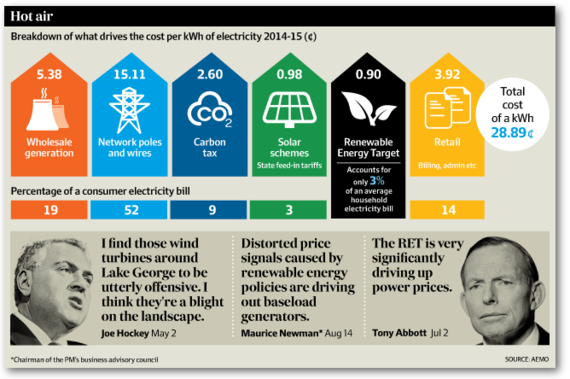An article in the Australian Financial Review takes issue with the Abbott government's plans to scale back subsidies for the renewables industry. The counterargument goes that renewables doesn't actually add very much to the cost of an electricity bill, but I was interested in the graphic that accompanied the article, which breaks down the typical Australian electricity bill.
As far as I can see, nearly every single component cost of the bill is increased by renewables.
- Conventional power stations are forced to ramp their output up and down to compensate for mometary drops in wind, making them much less efficient. Worse, if wind power is subsidised sufficiently to get a lot of turbines connected to the grid, the economics of conventional power stations can be sufficiently adverse to prevent any new investment in new power stations that would take advantage of price reductions in other forms of energy and would also bring more efficient and therefore cheaper power to consumers. In the UK, this has led to the capacity market, in which all market participants will be subsidised.
- Wind is a dispersed form of energy generations, requiring prodigious quantities of power lines to connect the turbines to the grid.
Only the costs of the retail end are not obviously inflated by renewables.
It would be interesting to know how much of the 52% represented by network costs is inflated by the need to connect wind turbines to the grid.
